18 Companion Plants for Lilacs (With Pictures)
-
Pete Ortiz
- Last updated:
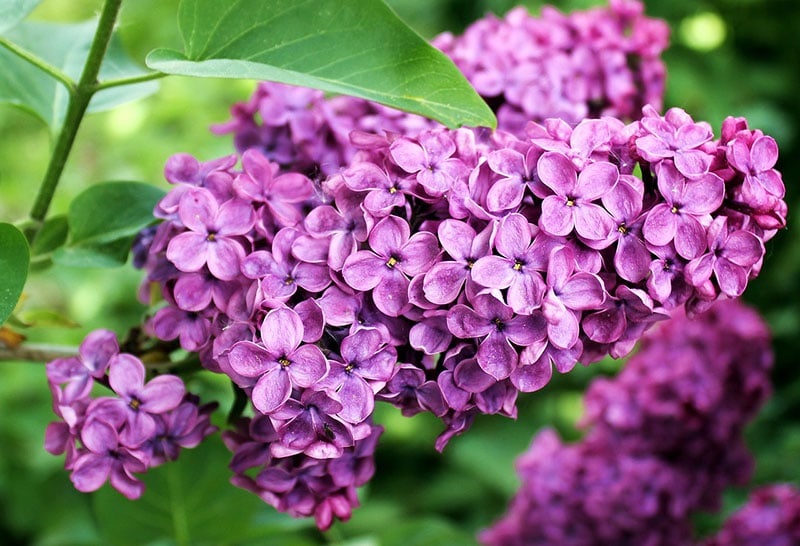
A Lilac in full bloom during spring can add so much beauty to your landscape, but when the show is over, you are left with a green shrub that may need some brightening up. Companion plants can replenish the delight that lilacs deliver, continuing the splendor of a floral show.
Choosing the best companion plant to share a bed with your lilacs means looking for plants that thrive in full sun and well-drained soil and are hardy in zones 3 through 7. Planting beneath lilac trees will have a different set of sun requirements because their canopies will create conditions for shade-tolerant plants. In this article, we’ll share some suitable and attractive companion plants for your Lilacs.
Spring Flowering Bulbs
Spring flowering bulbs are a great choice as companions for lilacs as they bloom simultaneously.
1. Tulips
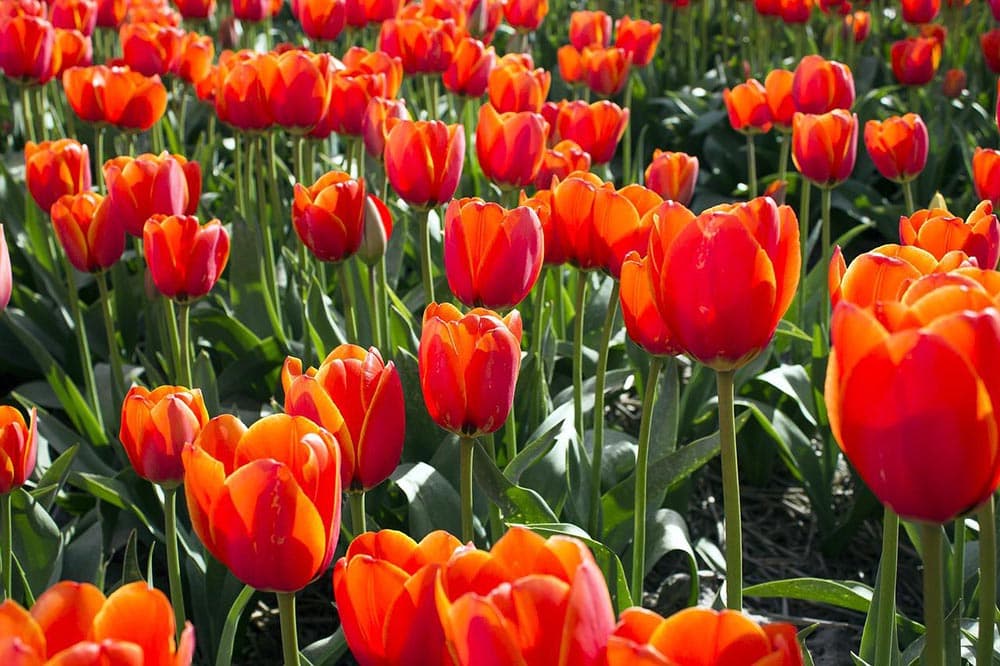
| USDA Hardiness Region: | 4–10 |
| Sun: | 6 hours of bright, direct sunlight per day |
| Soil: | Well-draining, slightly acidic soil |
Tulips are the most vibrant of all spring flowers and are also one of the simplest flowers to grow. Plant Tulips in autumn so you can enjoy their blooms the following spring.
Tulips make great companions because their stunning bulbs will adorn your garden beds until your Lilacs steal the show. They are available in many colors, and when they flower in late spring, they will complement the lilacs when they intersect with their blooms.
2. Daffodils
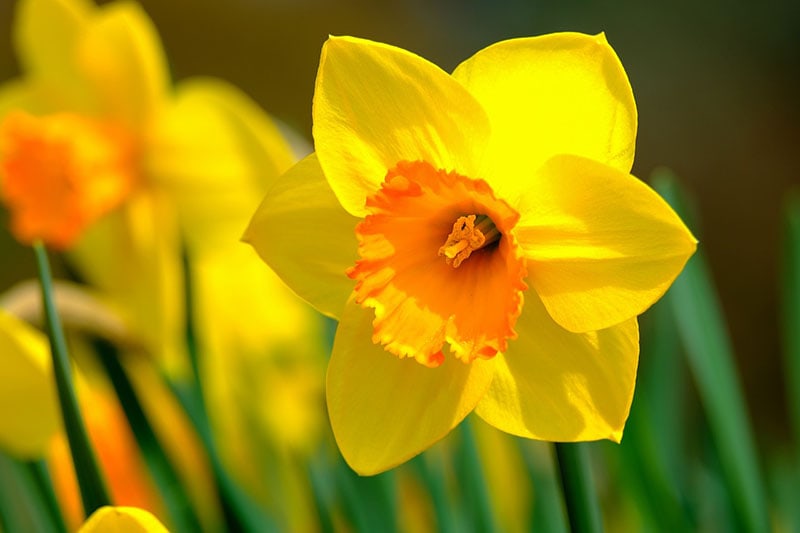
| USDA Hardiness Region: | 3–8 |
| Sun: | 6 hours of bright sun daily |
| Soil: | Moist, well-draining soil |
Daffodils never fail to charm and are one the most popular spring flowers, and they are an excellent starting point plant for beginner gardeners looking to grow their gardening skills. Most daffodils have yellow blossoms, but there are also white, orange, pink, and bicolor varieties.
Daffodils will only bloom once per season, so when the petals fade, allow the foliage to turn yellow and dry up. It is crucial to keep the leaves intact because they absorb sunlight and help feed the bulb for the following year’s flowers. The green foliage is one of the first things you will notice in the garden in spring and looks natural under a canopy of crowded lilac.
3. Peonies
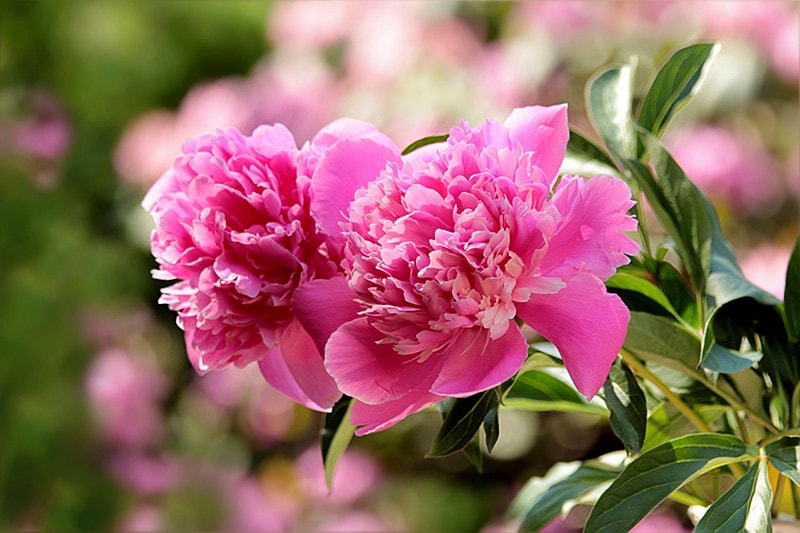
| USDA Hardiness Region: | 3–8 |
| Sun: | 6–8 hours of sun per day |
| Soil: | Well-draining soil, good air circulation around the plant |
The beauty and fragrance of Peonies make them one of the most loved perennials. With little care, a well-placed and delighted peony can bloom for 100 years or more. Peonies should be grown in full sun to ensure a bounteous flower show. Although some varieties can tolerate shade, less light usually means fewer flowers.
Peonies bloom just after lilacs have finished flowering, so the timing makes them an ideal companion.
4. Grape Hyacinth
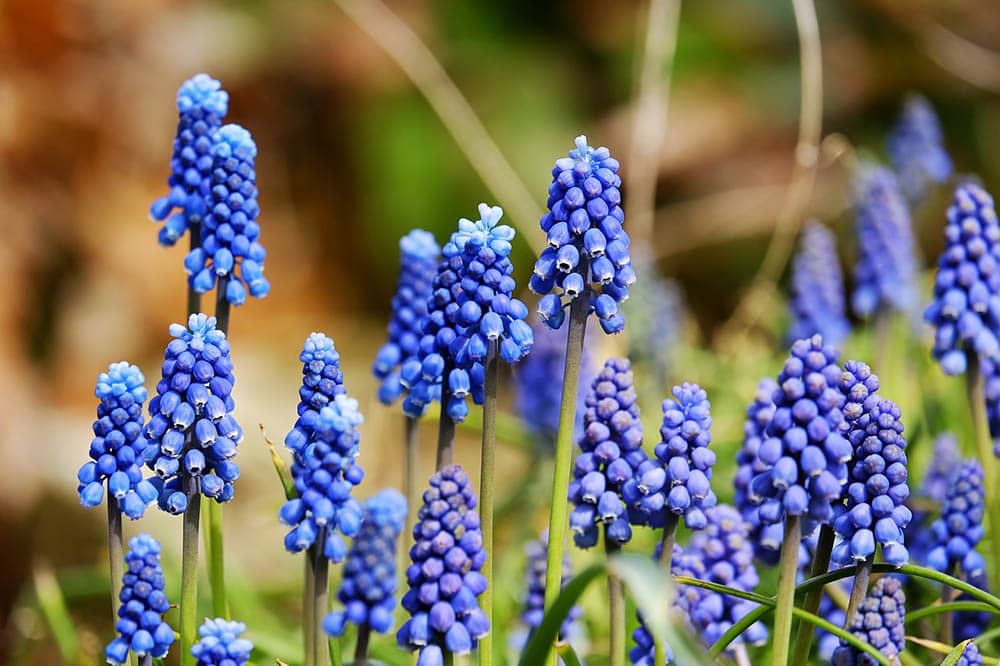
| USDA Hardiness Region: | 3–9 |
| Sun: | Full sun for maximum growth |
| Soil: | Well-drained soil, sun, or shade |
Grape hyacinths are a quick-growing filler plant that will often bloom again in the summer after your lilac tree has subsided. They grow in both sun and shade and only reach 6–8 inches high, making them a great companion. Grape hyacinths spread rapidly and have the potential to be quite intrusive, so you should plant them in areas where you don’t mind them spreading.
Grape hyacinths don’t require much attention after they bloom. They thrive on natural rainfall and do not require fertilizer, making them a great flower choice for novice gardeners.
Best Companion Plants for Lilac Shrubs
Lilacs are available in different varieties and will grow in various forms and sizes. A good companion plant will complement the way it grows without taking all the attention. Here are some excellent companion plants for lilac shrubs.
5. Creeping Phlox
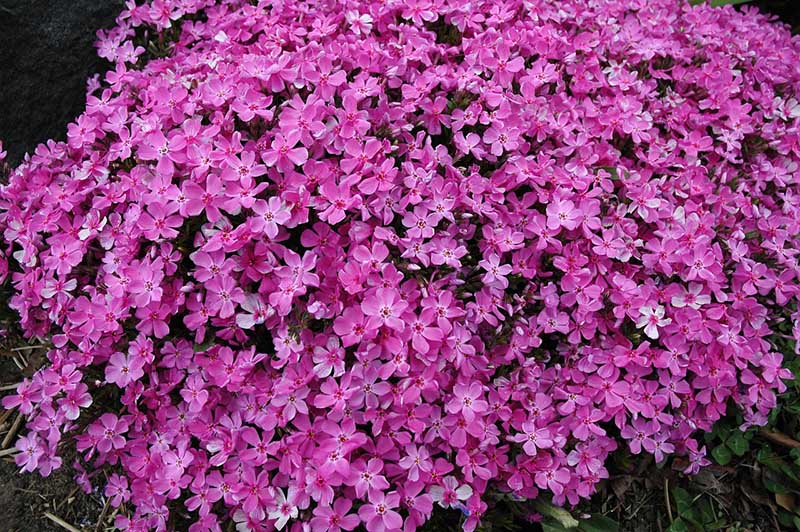
| USDA Hardiness Region: | 3–9 |
| Sun: | Full sun to partial shade |
| Soil: | Well-drained soil |
Creeping Phlox will look charming with its soft pastel blooms covering the ground below your lilac shrub. This plant will grow and cascade far when thriving, creating a beautiful blanket of flowers. This plant is a semi-evergreen perennial that blooms in spring, complementing your lilac shrub.
This plant is easygoing and thrives in a variety of environments. As long as it gets full sun to partial shade, creeping phlox can grow in almost any soil.
6. Spirea
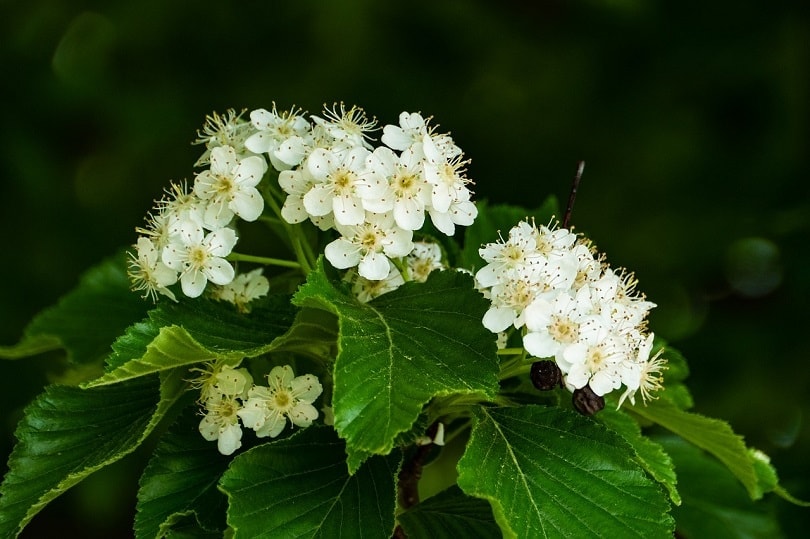
| USDA Hardiness Region: | 3–9 |
| Sun: | Full sun |
| Soil: | Well-draining soil |
Spirea blooming is profuse and begins when the lilacs show is over, so their clusters of pink, red, white, and purple flowers will maintain some color and fragrance in the garden. Because of their small leaf size and dense branch structure, they have a round shape that works well in groups or rows. It is easy to grow in most gardens and is tolerant of many conditions. It is a low-maintenance plant that will attract loads of butterflies and pollinators.
7. Daylily

| USDA Hardiness Region: | 3–10 |
| Sun: | Full sun to partial shade |
| Soil: | A moist, well-draining soil |
The cheerful and bright pink and red blooms of daylilies are a charming companion to the lilac’s pink, white, and purple clusters. As their name suggests, they only bloom for up to 36 hours, but they bloom profusely. Daylilies are popular, easy-to-care-for perennials that are tough and long-lived. They thrive in full sun but can tolerate a bit of dappled shade created by the lilacs.
8. Lady’s Mantle
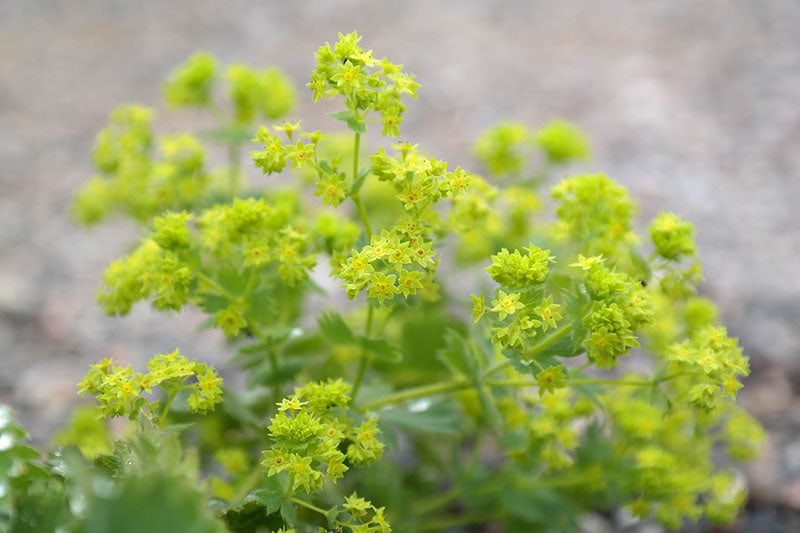
| USDA Hardiness Region: | 3–8 |
| Sun: | Full sun to partial shade |
| Soil: | Medium moisture, well-drained soil |
The dainty yellow flowers of Lady’s Mantle look wonderful beneath a lilac shrub, and when their show of charming blooms is over, their foliage will continue to look good all season. Because they spread and take over quickly, they prevent weeds and grass from interfering with the roots of the lilac. Lady’s Mantle will not only look beautiful in your garden but can also be used for lotions and soaps.
Lady’s mantle will continue to spread, so if you want to create a cottage-like charm with these plants in your garden, you must maintain it seasonally and divide it every few years.
9. Sedum Autumn Joy

| USDA Hardiness Region: | 3–10 |
| Sun: | Full sun |
| Soil: | Well-draining soil |
The soil requirements of the Sedum Autumn Joy, along with the dusty pink flowers, make them a great companion for lilacs. They are low maintenance, drought tolerant, sturdy, and resistant to pests and disease. Once the flowers die off, the foliage of this plant will continue to add interest and stay attractive through winter.
Best Companion Plants for Lilac Trees
Lilacs can also be shaped and grown into trees, giving you a variety of options for planting next to or beneath them.
10. Columbine
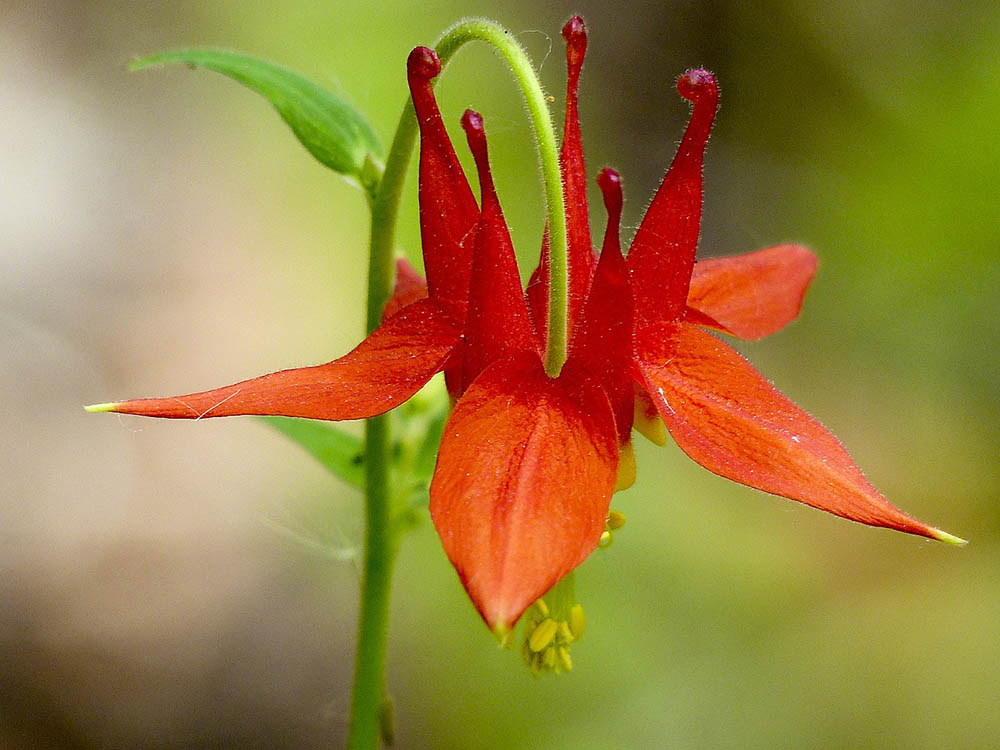
| USDA Hardiness Region: | 3–8 |
| Sun: | Sun and partial shade |
| Soil: | Well-draining soil |
The columbine plant is an easy-growing perennial that provides a seasonal attraction for much of the year. Emerging from its attractive dark green foliage, it blooms in various hues in the spring and turns maroon in the fall. They thrive in well-draining soil and can tolerate partial shade, which makes them a great plant to grow in the vicinity of your lilac tree. Keep in mind that their leaves turn yellow and wilt earlier than other perennials, so consider your lilac’s underlying structure.
11. Astilbe
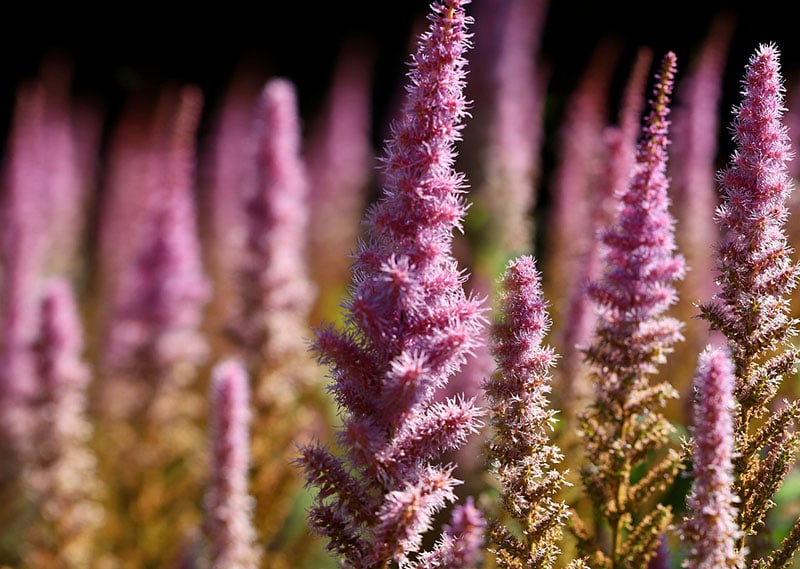
| USDA Hardiness Region: | 3–8 |
| Sun: | Partial shade |
| Soil: | Moist soil |
This shade-loving, perennial flowering plant will thrive in the dappled sunlight beneath a lilac tree, and its feathery blooms will provide a nice textural contrast to the lilac’s smooth, dark green leaves. They require more water than a lilac tree, so that is something to be mindful of when watering your Astilbe. There are a variety of Astilbe species that range in hues of pastel colors. Furthermore, different types bloom at various times and have varying heights.
12. Hosta
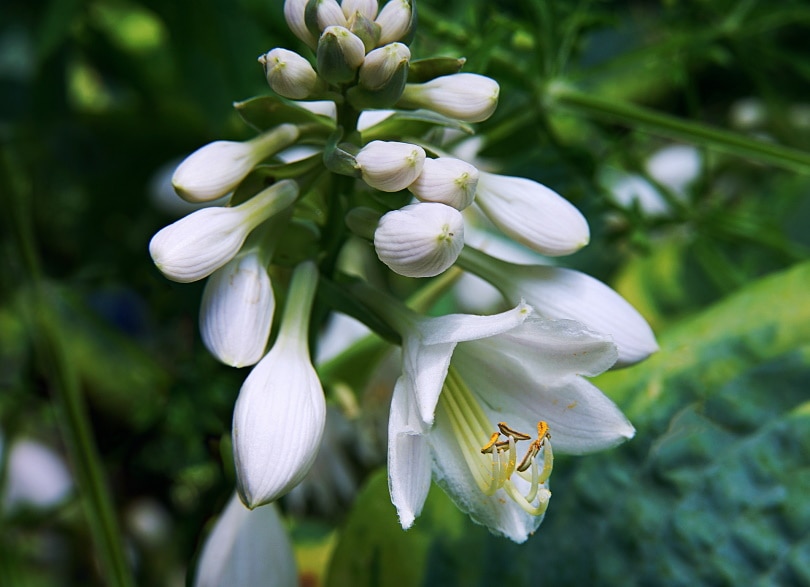
| USDA Hardiness Region: | 3–9 |
| Sun: | Partial shade |
| Soil: | Moist, well-draining soil |
The shade-loving Hosta will thrive beneath a canopy of lilac trees. They spread by clumping and fill in nicely around lilac trunks, keeping weeds at bay and lilac roots cool. Hostas will bulk up quickly and pretty much look after themselves once established if grown in the right environment, but the number one enemy of this plant is slugs and snails. As new foliage emerges in early spring, be on the lookout for these gastropods.
Companion Trees
13. Crabapples
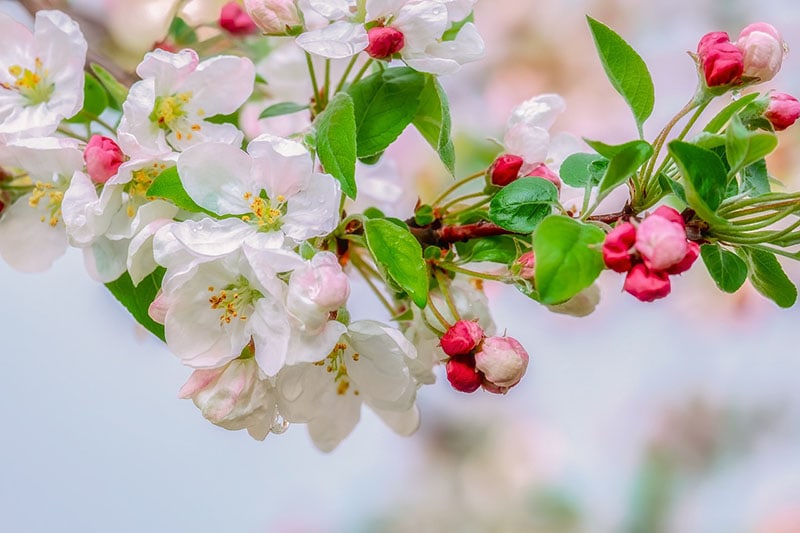
| USDA Hardiness Region: | 4–8 |
| Sun: | Full sun, 6 hours per day |
| Soil: | Well-draining soil |
A flowering Crabapple will flower generously about 1–2 weeks before the lilacs in spring. They produce fruit from summer to late fall, providing food for birds, small mammals, and insects. The crabapple is an excellent choice for a compact, versatile tree that provides interest nearly year-round.
Crabapples thrive in full sun but don’t enjoy hot weather. They can tolerate most soil conditions if planted in well-drained soil and in an area with good air circulation to avoid foliar diseases.
14. Cherries

| USDA Hardiness Region: | 4–6 |
| Sun: | 8 hours of sun a day |
| Soil: | Fertile, well-draining soil |
Cherry trees are not only grown for their spectacular blooms but also for their sweet, delicate fruits. Most Cherries are at their peak when lilacs bloom, providing a magnificent floral show.
Cherry trees thrive in the sun and will proliferate during the warmer months. When the tree is mature, it will adjust its growth to the seasons, but it may require more attention when it is young. A cherry tree’s roots can spread underground over an area larger than the spread of its branches. When deciding where to plant a cherry tree, you must consider the space above and below ground.
15. Dogwood
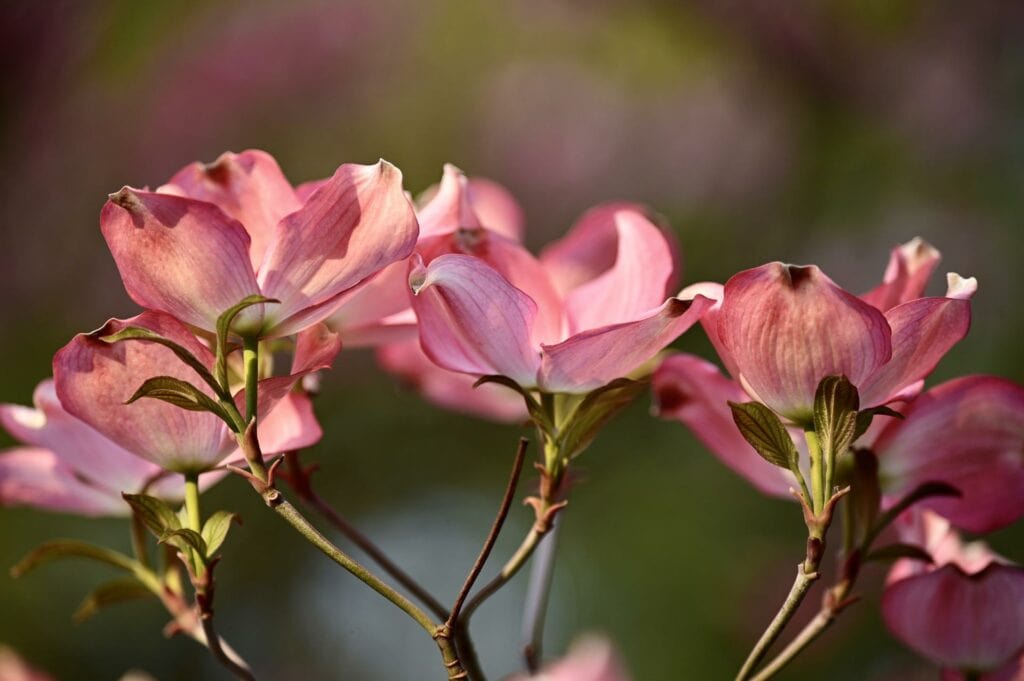
| USDA Hardiness Region: | 5–9 |
| Sun: | Full sun to partial shade |
| Soil: | Well-draining soil |
Flowering Dogwoods are not only stunning companions for early-blooming lilacs, but they provide interest all year.
The care requirements differ according to the species of tree. Dogwood trees prefer well-drained, slightly acidic soil. They require little care, but pruning may occasionally be necessary to shape the plant. Many species produce edible fruit that can be preserved, but some can be left on the tree for birds and small mammals to enjoy during the winter when there is little else available.
16. Conifers

| USDA Hardiness Region: | 10–11 |
| Sun: | 3 hours or less of sun a day |
| Soil: | Slightly acidic, well-draining soil |
Conifers add beauty to your landscape year-round. They are typically low maintenance, cold-hardy, and drought-resistant and prized for their evergreen, ornamental value. They come in all shapes and sizes, making them great for hedges, groundcovers, and feature points. Some conifers include pines, firs, false cypresses, and cedars.
Vines
Allow your lilac tree to serve as a trellis for light vines for bold companion planting with lilacs.
17. Clematis
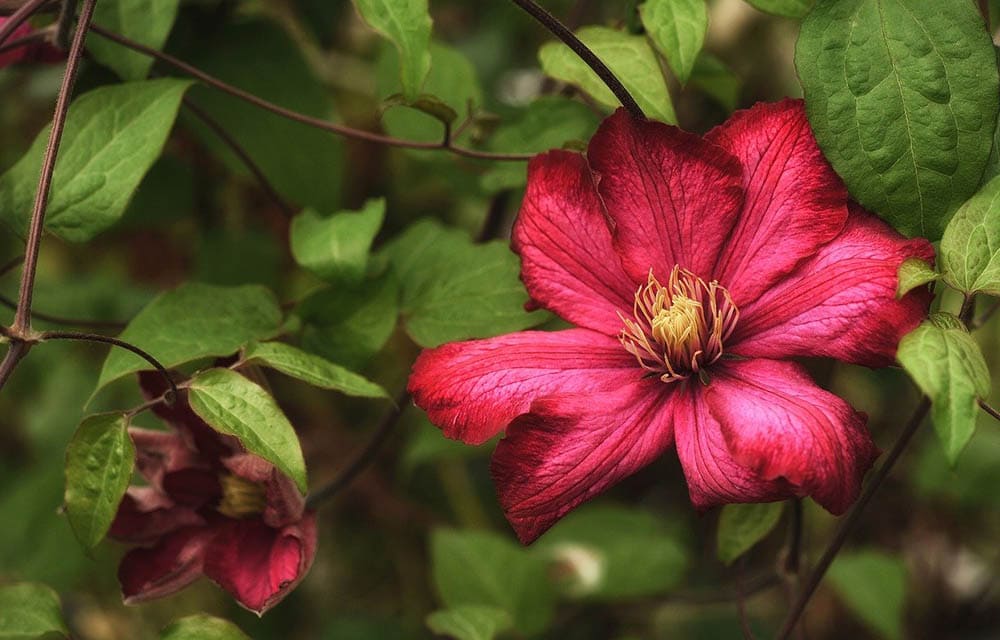
| USDA Hardiness Region: | 4–9 |
| Sun: | 6 hours of full sun |
| Soil: | Moist, well-draining soil |
Clematis is a lightweight vine that won’t harm your lilac if scaling it, and it will bloom just after a lilac has stopped blooming, extending the floral beauty of your landscape. A healthy clematis plant produces an abundance of flowers and foliage.
The colors range from white to wine red, lavender to deep purple, and a few yellows. A clematis vine can take several years to mature and begin flowering vigorously, but to increase your chances of success, purchase a plant that is at least two years old.
18. Maypop
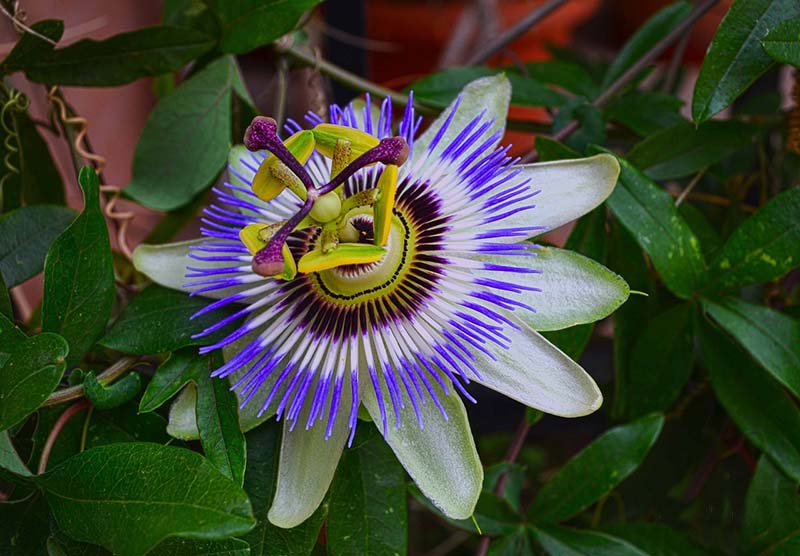
| USDA Hardiness Region: | 5–6 |
| Sun: | Full sun to partial shade |
| Soil: | Well-draining soil |
Lilac bushes also make excellent trellises for passionflower vines, such as Maypop, which blooms after the lilac show. They are renowned for their distinctive, showy flowers that are unlike any others you may have seen. Caring for your Maypop is simple, and you won’t have to worry about it too much once your vine is established. In dry weather, the vine requires some irrigation but is also drought-tolerant.
Worst Companion Plants
If you have large trees, your lilacs won’t thrive underneath them as they will block the sunlight. If you want to plant lilacs in the same vicinity, you will need to cut back some branches.
Too much moisture can cause the roots of your lilacs to rot, so water-loving perennials are not a good companion for these plants. These include plants such as the Japanese Iris, Marsh Marigold, Creeping jenny, Elephant’s Ear, Papyrus, and Swamp Sunflower.
Too much nitrogen in your soil will cause Lilacs to produce abundant green leaves while decreasing the number of buds and blooms. Nitrogen-loving plants such as lettuce and leafy greens, Brussels sprouts, rhubarb, and green beans are not great companion plants, so it’s best to keep them in their own vegetable bed.
Conclusion
When selecting companion plants for your lilac, choose plants that will thrive in the same soil and light conditions as your lilac variety, be mindful of their care requirements, and consider the color and texture of the foliage. Because most lilacs do not provide interest all year, you should select companion plants that will fill in before and after they bloom.
Featured Image Credit: S. Hermann F. Richter, Pixabay
Contents



